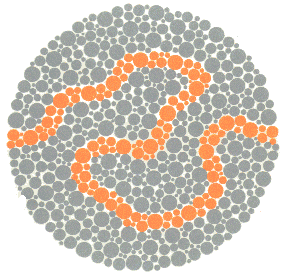Understanding the basics of color blindness in women
People often get confused with the term “color blind” because even after suffering from color blindness, some people are able to see a lot of colors. The right term that explains most cases is ‘color vision deficiency’. Color vision deficiency is a congenital or innate disease which depends upon chromosomes dysfunction.
Several studies have shown that about 7% of all men suffer from some or the other kind of color blindness and only about 0.4-1% of all women experience colorblindness. This is associated with the genetics of colorblindness. How genetics is associated with color vision problem in women can be explained with the given possibilities.
Main possibilities of being color blind in women
- If a woman is a carrier, i.e. only her one X-chromosome is defective, then the woman might have slight difference in colored vision (which can be neglected). This is due to X-inactivation. During this process, there are 50% of defective genes and 50% gene are healthy.
- If both the X-chromosomes in the woman are defective, then the woman has colorblindness; most commonly red-green colorblindness.
- If both X chromosomes are not affected, then the woman is not colorblind and has normal colored vision.
Genetics of color blindness: Can women be color blind?
The genes that cause colorblindness are X-linked, and therefore women are mostly carriers of colorblindness. There are 23 total pairs of chromosome in humans, where the 23rd pair is the sex chromosome. If this pair consists of two X chromosomes, it is a female and if it has X and Y chromosome, it is a male. The corrupted or faulty ‘gene’ for color blindness is detected only on the X chromosome.
In males, only one X-chromosome is present and if the gene on this chromosome is faulty, it leads to colorblindness. Whereas, in case of a female, the faulty corrupted gene must appear on both of her X-chromosomes to cause colorblindness. This is why women have more resistance towards colorblindness. It is observed that if a woman has an abnormality on one X-chromosome, then it can be managed by another copy on the other X and if both X-chromosomes are affected, the woman suffers from colorblindness.
Can females who are color blind have an impact on their children?
Those people who are colorblind have queries for their children such as why are boys at a greater risk or can girls also become color blind. It was studied that if a father is color blind, the boy may not be color blind because his father would not pass his X-chromosome to his son, instead to his daughters.
In such cases, a girl will only have color blindness if her father is colorblind and her mother is a carrier or colorblind. If a father is not color blind, a ‘carrier’ daughter will not suffer from colorblindness.
In case of boys, if a woman is a carrier of the ‘faulty gene’ and she passes on this faulty X-chromosome to her son, he will be born color blind. But, if he does not receive this gene and the ‘good’ chromosome is passed, he will not suffer from color blindness.







